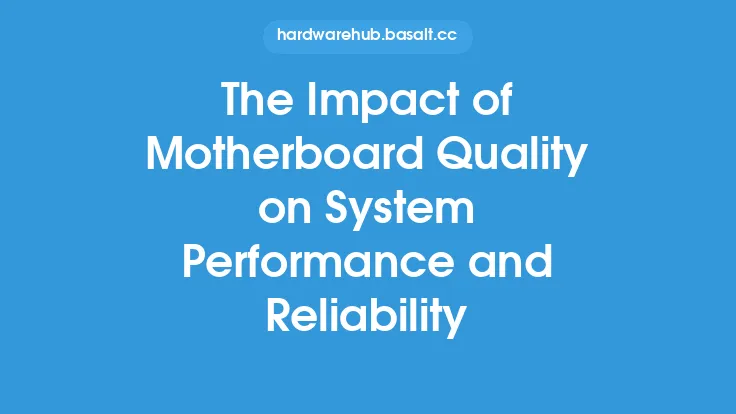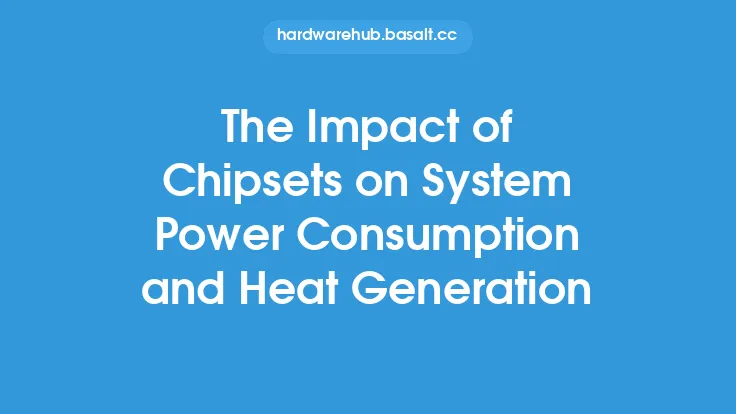When it comes to pushing the limits of computer hardware, few practices are as intriguing as GPU overclocking. The process of increasing the clock speed of a graphics processing unit (GPU) beyond its factory settings can lead to significant performance gains, making it a popular tweak among gamers and graphics enthusiasts. However, this pursuit of enhanced performance comes with potential risks, particularly concerning system stability and reliability. Understanding the impact of GPU overclocking on these critical aspects is essential for anyone considering this modification.
System Stability Considerations
System stability refers to the ability of a computer system to operate without crashing, freezing, or exhibiting other forms of instability. Overclocking a GPU can affect system stability in several ways. Firstly, increasing the clock speed of the GPU generates more heat, which can lead to thermal throttling if the cooling system is inadequate. Thermal throttling occurs when the GPU reduces its performance to prevent overheating, which can result in decreased system stability and performance. Secondly, overclocking can cause the GPU to consume more power, potentially overloading the power supply unit (PSU) and leading to system instability. Lastly, pushing the GPU beyond its designed specifications can lead to electrical overstress, damaging the component and causing system crashes or failures.
Reliability and Longevity Concerns
The reliability and longevity of a GPU are also critical considerations when overclocking. Reliability refers to the component's ability to perform its intended functions over time without failing, while longevity pertains to its lifespan. Overclocking can reduce both by subjecting the GPU to increased stress. The higher voltages and temperatures associated with overclocking can accelerate wear and tear on the GPU's components, such as the transistors and capacitors, leading to premature failure. Furthermore, the increased power consumption can lead to a reduction in the GPU's mean time between failures (MTBF), a measure of its reliability. It's also worth noting that some manufacturers may void the warranty of a GPU if it has been overclocked, especially if the overclocking process causes damage to the component.
Technical Aspects of GPU Overclocking
From a technical standpoint, GPU overclocking involves adjusting several key parameters to achieve higher performance. The most common parameters adjusted are the core clock speed, memory clock speed, and voltage. The core clock speed determines how fast the GPU's processing units operate, while the memory clock speed affects how quickly data is transferred between the GPU and its memory. Increasing the voltage allows for higher clock speeds but also increases power consumption and heat generation. Understanding the relationship between these parameters and how they impact system stability and reliability is crucial for successful overclocking. For instance, a higher core clock speed may require a corresponding increase in voltage to maintain stability, but this also increases the risk of overheating and electrical overstress.
Mitigating Risks through Monitoring and Cooling
To mitigate the risks associated with GPU overclocking, it's essential to monitor the GPU's temperature, voltage, and power consumption closely. Specialized software tools can provide real-time monitoring of these parameters, allowing overclockers to adjust their settings accordingly. Additionally, a robust cooling system is vital to prevent overheating. This can include high-performance air coolers or liquid cooling solutions, which can more effectively dissipate heat generated by the overclocked GPU. Proper case airflow and cable management also play a role in maintaining a cool operating environment. By carefully monitoring the GPU's conditions and ensuring adequate cooling, overclockers can minimize the risks to system stability and reliability.
Conclusion and Recommendations
In conclusion, while GPU overclocking can offer significant performance benefits, it's crucial to approach this practice with caution, considering the potential impacts on system stability and reliability. Overclockers must be aware of the technical aspects of GPU operation and the risks associated with pushing these components beyond their specifications. By understanding these factors and taking steps to mitigate risks, such as through careful monitoring and adequate cooling, enthusiasts can safely explore the limits of their GPU's performance. As with any form of overclocking, it's also important to weigh the potential benefits against the risks and consider whether the gains in performance are worth the potential costs to system stability and component longevity. For those willing to take on these challenges, the rewards can be substantial, offering enhanced gaming and graphics performance that surpasses the capabilities of stock hardware.





